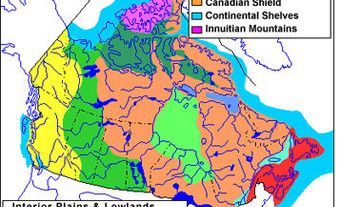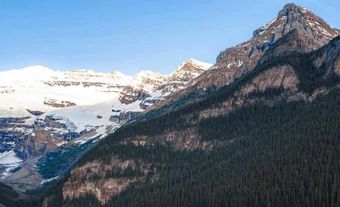Crown land, sometimes called public land, is the term used to describe land owned by Canada's federal or provincial governments. Authority for control of these public lands rests with the Crown, hence their name. Less than 11% of Canada's land is in private hands; 41% is federal crown land and 48% is provincial crown land. Thus, 89% of land in Canada is Crown land.

Description
Forests, wetlands, prairies and other wilderness cover most of Canada’s crown land. Crown land also includes shorelines, coastlines and the beds of most lakes and rivers.
This land is typically managed by federal or provincial Ministries of Natural Resources under various acts, such as the Public Lands Act, the Land Act and the Crown Lands Act.
In contrast to private land, Crown land is not owned by individuals but belongs to all Canadians. Individuals, organizations, municipalities and Indigenous communities may request to buy or rent parcels of crown land.
Distribution
About 89% of Canada is designated as either federally or provincially managed crown land, though it may be rented out or sold. However, different provinces and territories have vastly differing proportions of crown land. About 4% of federally administered land is found in the provinces, ranging from 10.6% in Alberta to only 0.2% in Quebec. Provincial crown land ownership varies, too, from a high of 95% in Newfoundland to less than 2% in Prince Edward Island.
The Yukon, the Northwest Territories and Nunavut are administered on behalf of Canada by the Federal Departments of Indigenous and Northern Affairs through the Territorial Lands Act and Public Lands Grants Act. This makes up the majority of federally owned crown land.
Uses
Representing nearly 90% of Canada’s land, Crown land (both at the federal and provincial level) is not simply an untouched and unmanaged wilderness. Massive swaths of Canada’s crown land are allocated for various purposes.
Economic Development and Natural Resources
Canada’s federal and provincial governments lease the surface and subsurface rights to crown land’s mineral, energy, forest and water resources to private enterprises and companies. As a result, a substantial proportion of Canada’s crown land is currently being used or has been used in the past for natural resource extraction. A rising interest in renewable energy may open large areas of crown land for wind, solar, biomass and hydroelectric energy away from cities in the near future. As a result, crown lands form a very important historical and modern source of government income in Canada.
Clear-cut areas, tree plantations, open pit mines, hydroelectric dams and other marks of industry dot much of the crown land in the north of most Canadian provinces.

Recreation and Tourism
National parks and provincial parks are some of the most visible allocations of crown land to many Canadians. These areas are often sites of high amounts of tourism and recreation and can be economic hubs.
Even beyond the borders of managed parks, for many Canadians, crown lands still represent an opportunity for recreation. While regional restrictions exist, Canadians are typically welcome to enter unallocated crown land (often described as the “wilderness”), camp for brief periods, hunt and fish (in season and with license), and explore these regions without the need to pay a fee or acquire a permit. Various trails for hiking and biking criss-cross parcels of crown land close to communities. This right, however, comes with the obligation to leave the area as it was found. Trees and plants may not be cut or damaged, wildlife may not be disturbed, and trash must be packed out.
Other
Crown land can also be allocated for various other purposes. Some of the largest ones are reserves and federal military bases. However, in some regions, crown land can be opened up and made available for urban development, individual purchase and agriculture.
Crown land is also typically open for data collection and investigative activities by scientists. These researchers may use stream gauges, wildlife and habitat inventories, weather stations, non-mechanized soil sampling, and other similar activities to answer various research questions.

 Share on Facebook
Share on Facebook Share on X
Share on X Share by Email
Share by Email Share on Google Classroom
Share on Google Classroom



